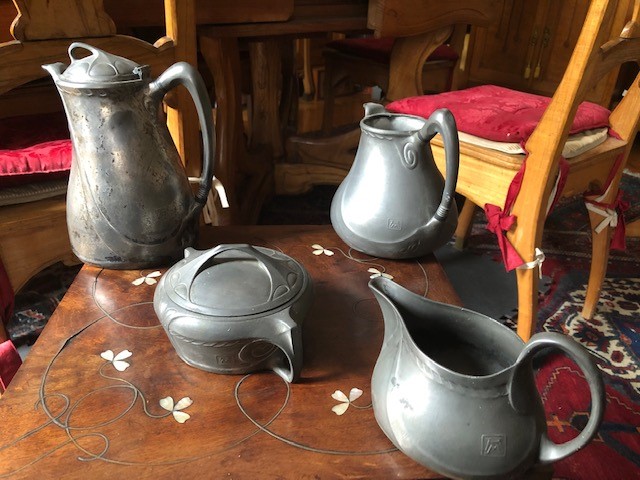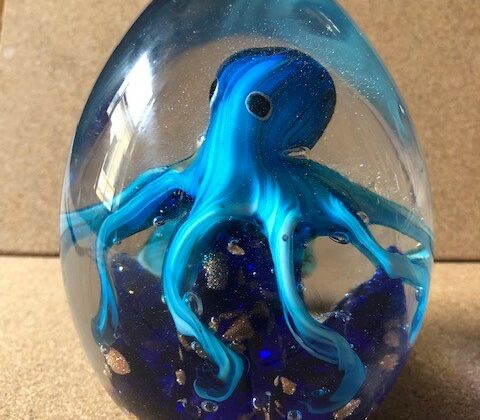AlbinMuller, Darmstadt, and the missing sugar bowl
Prof. Francesco Carelli
The economic viability of the company depended, as it did for the competition, on technical advancement. In 1902, Gerhardi was successful in inventing a dip – casting process which could eliminate the oxidation of the pewter during casting. Besides this, there were stamping and spinning processes which enabled the production of complexes objects from relatively few individual component. Gerhardi experimented with metals other than pewter, predominantly nickel and, as early as 1906, aluminum. The company was thus prepared for the constant rice in the price of pewter and its total shortage at the outbreak of the First World War. The main focus, however, was still on kitchenware and other reasonably priced articles of everyday use.
Gerhardi moved into the focus of artistic interest with his pewter production after designs by well known artists in the Art Nouveau / post Art Nouveau period until around 1908. The company acquired the first “creative design” from Bernhard Wening in 1901/02; he was the teacher at the Hanau Zeichenakademie. In particular, the , in part only later, members of the Darmstadt artists colony, Peter Behrens, Paul Haustein, AlbinMuller and Joseph Maria Olbrich worked for Gerhardi.
Albin Müller (13 December 1871 – 2 October 1941), also known as Albinmüller, was a German architect and designer active in Darmstadt. In 1906 he was appointed to the Darmstadt Artists’ Colony, where he became the lead architect after Joseph Maria Olbrich’s death (1908). In 1907 he was appointed a professor, and from 1907 to 1911 taught Applied Arts. In 1918 along with Kasimir Edschmid, Albinmüller was appointed the President of the newly created Art Council in Darmstadt. In 1926, Müller was appointed architect of the Deutsche Theaterausstellung in Magdeburg. In 1934 he turned to landscape painting and also worked as a writer.
(Coffee pot, tea pot, cream jug, sugar bowl ( sugar bowl is missing at Darmstadt Museum !! ) On shallow base, pear – vessel bodies with elevated short spouts and vegetal, stylised relief. Hinged lids with abstract petal relief and stem folded forward as front eyelet grip. Design: Albinmuller ca. 1904, model number 1816. Mark: Gerhard & Co. On wall artist’s monogram: AM Metallkunst 1990, no. 185. Ref. Darmstadt, 1990. No.250 ( coffee service ). Modern Art of Metalwork Broham Museum – Berlin, 2001)





